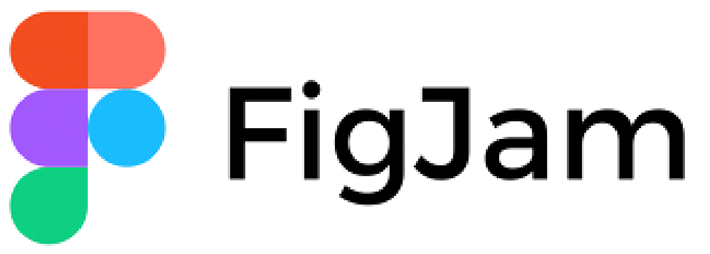Today, the number of project planning programmes has reached unmanageable proportions.
However, they are brightly colored containers for the historical evolution of work management.
They are all based on two fundamental and opposing requirements:
Division of Labor
The division of a planned activity into various tasks to be performed by different workers, increasing productivity and speed. Historically, it evolved from the artisan society to the industrial age, where it was essential for mass production and efficiency. Adam Smith highlighted its benefits in 1776 already, noting improved dexterity, time savings, and innovation, but also warned of its dehumanizing effects on workers. It is still a fundamental concept in management theories today.
Coordination and Crontol
The coordination of the seperated tasks to accomplish an activity. Control is a central aspect of management and can be carried out in several ways. Methods include direct supervision, standardized work, mutual adjustment, formal positions, rules, technology or organizational culture. These impact the physical and psychosocial work environment, directly affecting employee health.
Many techniques of historical forms of work organisation can be found in the software interfaces.
In this project we will focus on three organisational models in detail.
Scientific Management

From the 1900s.
This concept, developed by Frederick W. Taylor, focused on optimizing workflows to improve productivity. It emphasized efficiency, a division of labor, standardized procedures, systematic training, and centralized planning. This theory laid the groundwork for modern project management and still influences how tasks are planned and executed today.
Lean
From the 1950s.
Lean Management, originating from the Toyota Production System, focuses on minimizing waste and maximizing productivity. It emphasizes continuous improvement, customer-centricity, and efficient resource use. Key principles include just-in-time production and small, ongoing improvements. Lean Management is widely adopted across industries, promoting efficiency, quality, and adaptability in modern project management.
Agile
From the 1990s.
Agile Work emphasize flexibility, collaboration, and customer-centricity. It emphasizes iterative development, allowing for continuous improvement and rapid response to change, contrasting with the rigid, hierarchical structures of the preceding concepts. Key principles include self-organizing teams, frequent feedback loops, and delivering small, incremental updates.
These models established various methods of visual management, some of which can still be found in today’s programmes.
Timeline
A bar chart which represents project schedules as horizontal lines, illustrating tasks, dependencies and progress.
Kanban Board
Displays the flow of work using columns that represent different stages of the process.
Retrospective Board
Captures and organizes feedback on performance and areas for improvement
Task
Familiarise with these three work organisation models and analyse their historical influences on project management software by using the visual management tools.
Today, the number of project planning programmes has reached unmanageable proportions.
However, they are brightly colored containers for the hirstoric evolution of work management.
They are all based on two fundamental and opposing requirements:
Division of Labor
The division of a planned activity into various tasks to be performed by different workers, increasing productivity and speed. Historically, it evolved from the artisan society to the industrial age, where it was essential for mass production and efficiency. Adam Smith highlighted its benefits in 1776 already, noting improved dexterity, time savings, and innovation, but also warned of its dehumanizing effects on workers. It is still a fundamental concept in management theories today.
Coordination and Crontol
The coordination of the seperated tasks to accomplish an activity. Control is a central aspect of management and can be carried out in several ways. Methods include direct supervision, standardized work, mutual adjustment, formal positions, rules, technology or organizational culture. These impact the physical and psychosocial work environment, directly affecting employee health.
Many techniques of historical forms of work organisation can be found in the software interfaces.
In this project we will focus on three organisational models in detail.
Scientific Management

From the 1900s.
This concept, developed by Frederick W. Taylor, focused on optimizing workflows to improve productivity. It emphasized efficiency, a division of labor, standardized procedures, systematic training, and centralized planning. This theory laid the groundwork for modern project management and still influences how tasks are planned and executed today.
Lean
From the 1900s.
This concept, developed by Frederick W. Taylor, focused on optimizing workflows to improve productivity. It emphasized efficiency, a division of labor, standardized procedures, systematic training, and centralized planning. This theory laid the groundwork for modern project management and still influences how tasks are planned and executed today.
Agile
From the 1900s.
This concept, developed by Frederick W. Taylor, focused on optimizing workflows to improve productivity. It emphasized efficiency, a division of labor, standardized procedures, systematic training, and centralized planning. This theory laid the groundwork for modern project management and still influences how tasks are planned and executed today.
These models established various methods of visual management, some of which can still be found in today’s programmes.
Timeline
A bar chart which represents project schedules as horizontal lines, illustrating tasks, dependencies and progress.
Kanban Board
Displays the flow of work using columns that represent different stages of the process.
Retrospective Board
Captures and organizes feedback on performance and areas for improvement.
Task
Familiarise with these three work organisation models and analyse their historical influences on project management software by using the visual management tools.















